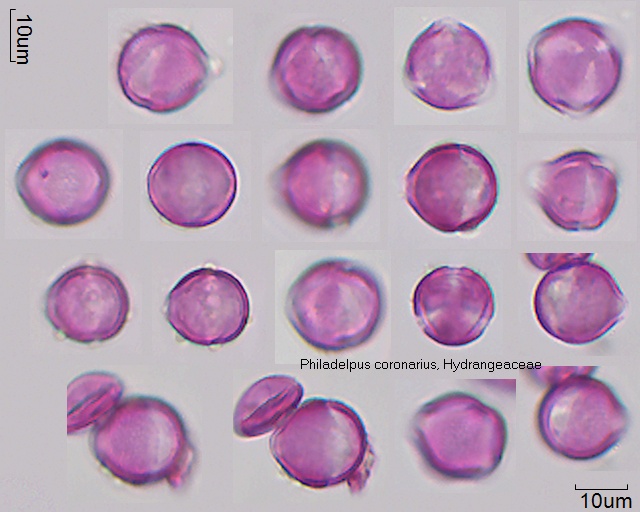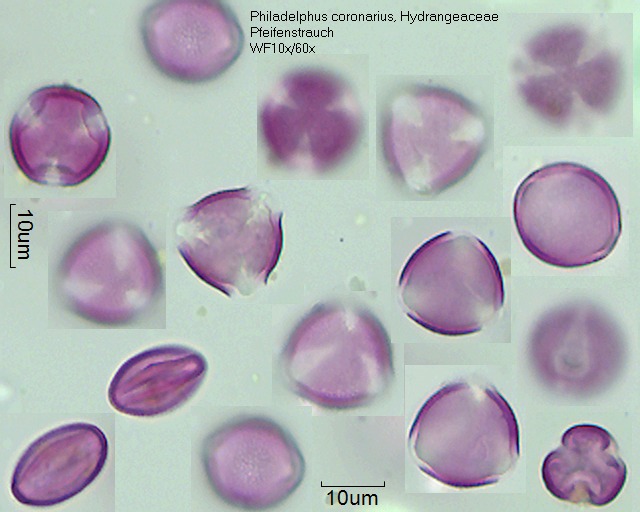Philadelphus coronarius
Zur Navigation springen
Zur Suche springen

|
Familie: | Hydrangeaceae (Hortensiengewächse) |
| Deutscher Name: | Pfeifenstrauch, Falscher Jasmin | |
| Pollengrösse: | 18 μm (Small) | |
| Pollenklasse: | 22 Tricolporatae mit reticulaten, microreticulaten oder fossulaten Skulpturen | |
| Pollen: | Rundlich bis leicht dreieckig konvex, sphäroid (PoFormI ca. 0.90; 0.81-0.97), isopolar, tricolporat, reticulat. Die Aperturmembranen sind nicht ornamentiert. Kleines bis mittelgrosses Polarfeld (PolFeldI ca. 0.17; 0.14-0.28). Getrocknete Pollen prolat, sulcat. Klassifizierung nach [1][2] | |
| Präparatenummer: | 2-091, 2-091-1 | |
| Diskussion: | Kommentare und Hinweise zu Philadelphus coronarius ans Pollen-Wiki senden |
- ↑ NAGAMITSU, Teruyoshi; NAGAMASU, Hidetoshi, Keys for the Pollen of Ashiu, Central Japan, Contributions from the Biological Laboratory, Kyoto University (1994), 28(3): 261-355, URL http://hdl.handle.net/2433/156110
- ↑ Pollen Morphology of Exotic Trees and Shrubs of Edirne, Journal of Applied Biological Sciences 6 (2): 13-18, 2012
Stebler Th., Philadelphus coronarius, In: Pollen-Wiki (20. Apr. 2024), https://pollen.tstebler.ch/MediaWiki/index.php?title=Philadelphus_coronarius .







